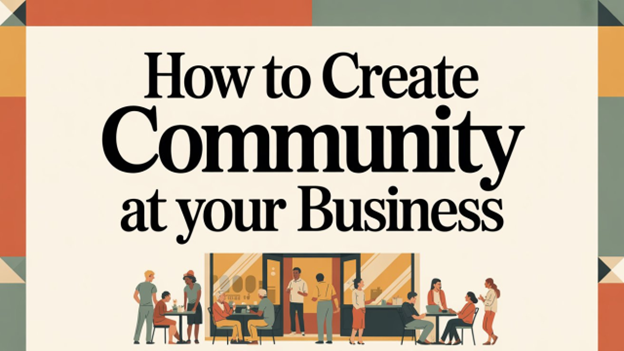How to Embrace More Than Just Christmas in Your Business
The holiday season is a time of joy, celebration, and increased consumer spending. For small businesses, this time offers a tremendous opportunity to maximize sales and connect with customers on a deeper level. But if you think of the holiday season as just Thanksgiving and Christmas, you could be missing out.
Experts estimate that most small retail businesses earn about 20% of their annual sales in December and even more if you factor in November as well. While Christmas has been the front runner in most people’s minds for decades, there’s now a lot more mainstream celebrating occurring in the last quarter of the year, and your business should be a part of it.
Whether your customer celebrates Christmas, Hanukkah, Kwanzaa, Diwali, or other religious or cultural holidays, tailoring your approach can make a significant impact on your bottom line. Below are some proven tactics that will ensure you leverage the holidays to increase sales for small businesses while in parallel, having a positive impact on the local community.
Embrace Inclusivity and Diversity
Recognizing and celebrating the diversity is crucial. Acknowledge various holidays through inclusive messaging in your marketing materials, social media posts, and storefront decorations. Consider featuring a diverse range of holiday greetings and symbols to resonate with customers from different cultural backgrounds. Inclusivity not only broadens your customer reach but also fosters a sense of belonging among diverse communities.
Some business owners may feel inauthentic if they embrace something they don’t celebrate. However, this is about providing a fulfilling customer experience. And if your customers are celebrating other holidays, you should be too.
Curate Special Holiday Offers and Promotions
Entice shoppers with exclusive holiday deals, discounts, and bundled offers. Create promotions specific to each holiday, offering value-driven packages or themed products that align with the spirit of the occasion. Consider limited-time offers or holiday-themed gift sets to attract customers seeking unique gifts for their loved ones.
Personalize Customer Experiences
Go the extra mile to personalize interactions with your customers. Use their purchase history or preferences to recommend suitable holiday gifts or products. Consider sending personalized holiday greetings or thank-you notes, adding a touch of warmth and appreciation that resonates with the festive season. If your community celebrates a custom that nearby towns don’t, embrace it and teach others about it.
Host Festive Events and Workshops
Organize holiday-themed events or workshops that align with the spirit of the season. These can include DIY gift-wrapping sessions, cooking classes featuring traditional holiday recipes, or storytelling sessions highlighting diverse cultural celebrations. Such events not only attract customers but also foster community engagement and goodwill.
Optimize Online Presence and E-commerce
With the rise in online shopping, ensure your website is optimized for the holiday rush. Create a seamless and secure online shopping experience, highlighting holiday-specific products or gift guides. Leverage social media platforms to showcase your holiday offerings and engage with customers through interactive content like polls, quizzes, or behind-the-scenes glimpses of your holiday preparations.
Encourage Gift Cards and Gift Certificates
Gift cards and certificates are popular choices during the holidays. Promote them as ideal presents for friends and family, allowing recipients to choose their preferred products or services. Ensure these options are prominently displayed and easily accessible both online and in-store.
Partner with Local Charities or Causes
Spread the holiday cheer by partnering with local charities or initiatives. Consider donating a portion of your sales to a charitable cause or organizing a fundraising event. Engaging in philanthropic endeavors not only reflects positively on your business but also resonates with customers seeking socially responsible brands. Plus, volunteering and charitable giving works in every season.
Extend Gratitude and Appreciation
Show appreciation to your loyal customers by offering loyalty rewards or exclusive perks during the holiday season. A simple thank-you note or token of appreciation can strengthen customer loyalty and encourage repeat business.
Additional Holiday Diversity Tips
If you want to ensure your business appeals to more than just Christmas shoppers, consider the following ideas:
- Research the different types of holidays that fall during the end of the year and showcase other’s customs.
- Infuse your business space with decorations that represent a variety of cultural celebrations, ensuring that your customers feel a sense of inclusivity.
- Be mindful to include elements from various cultural festivities, creating a warm and welcoming atmosphere for everyone.
- Introduce products or services that cater to different cultural celebrations. For instance, offer special promotions or themed items during Diwali, Hanukkah, Lunar New Year, and other significant occasions.
- Craft marketing messages that embrace diversity and use inclusive language, acknowledging various cultural and religious celebrations.
- Extend personalized holiday greetings to your customers, recognizing and respecting the diversity of celebrations during the season.
- Consider offering special discounts or promotions tied to specific cultural or religious holidays to show your appreciation for the varied traditions your customers may observe.
- Host or participate in cultural events within your community to demonstrate your commitment to inclusivity.
- Engage with local cultural organizations and collaborate on initiatives that celebrate diversity, creating a positive and inclusive image for your business.
Small Business Season presents an amazing opportunity for small businesses to connect with customers, boost sales, and foster a sense of community. By reaching out and celebrating additional holiday beliefs and celebrations, offering tailored promotions, and personalizing customer experiences, you can make the most of this festive period, while respecting the diverse holiday traditions of your customers. Remember, the holidays are about spreading joy, goodwill, and building lasting connections with your customers and the local community. Realizing that your customers are celebrating more than just Christmas is a good start.
--------
This article published by the Leavenworth-Lansing Area Chamber of Commerce with permission from Frank Kenney Chamber Pros Community.




